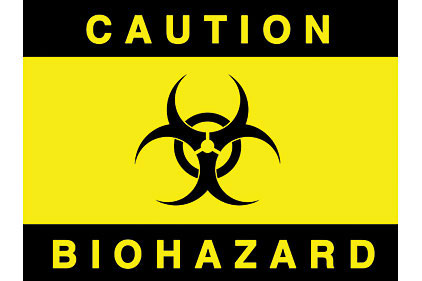Be prepared
How properly to handle bloodborne pathogen exposure.


|
Injuries are a part of life in most industries.
While rare, injuries can take a variety of forms and evolve from a plethora of circumstances. When an incident takes place involving cuts, punctures or scrapes, the exposure to bloodborne pathogens is high. How we respond to these situations is critical to protecting our coworkers and ourselves from infection. Whether in treatment, cleanup or disposal, the risks of coming into contact with contaminated materials cannot be overlooked.
OSHA standard 1910.1030 focuses on bloodborne pathogens and how to respond to incidents involving the risk of exposure.
Bloodborne pathogens are defined as microorganisms transmitted via human blood causing disease in humans. They include but are not limited to: hepatitis B, hepatitis C and HIV (a precursor to AIDS). While hepatitis B, a liver disease that usually causes organ inflammation leading to cancer or cirrhosis, has a vaccine readily available, both hepatitis C and HIV do not. Warning signs of potential exposure and facts from the Center for Disease Control are outlined in the Toolbox Talk at www.asa.net/safety.
Accounting for the requirements of OSHA 1910.1030 typically is outlined in a company’s exposure control plan. That document provides determination of employee risks to bloodborne pathogens in the workplace and communication protocols for associates. It will include an examination of ways to reduce or eliminate exposure and provide a set of procedures for cleanup, disposal, incident documentation, and training on warning signs, labels and response. Regulated items under the OSHA standard include blood, body tissue, used bandages, towels, gloves and contaminated sharp objects such as needles, broken glass and cutting blades. Regulations also are in place for disposal containers.
Biohazard labels should be used on all containers holding infectious materials. Furthermore, receptacles used for disposal of contaminates should be puncture-proof. Always use appropriate protection gear when handling these materials. Proper personal protection equipment may include gloves, a mask, shoe sheathes, goggles, an apron or safety glasses. When at risk, be sure these resources are available to you prior to handling any first response, cleanup or disposal activities.
Proper cleanup procedures
Cleanup and disposals are two critical considerations when dealing with bloodborne pathogens. Contaminated items should be disposed of in durable leak-proof, well-labeled and closable containers. Never overfill containers. If the exterior of your primary container has been exposed to infectious materials, use a secondary container. Contaminated clothing never should be cleaned or rinsed at the facility and should not continue to be worn following an incident. Handle clothing or personal protective equipment exposed to bloodborne pathogens with gloves prior to disposal. More on disposal and work practice controls are available in the Toolbox Talk.
Do not attempt to decontaminate gloves unless they are specifically identified as cleanable. Throw away any hand protection that has holes, tears or has otherwise been compromised. Be sure to wash your hands after removing any compromised hand protection. Use a mask and safety glasses when risk of infection can occur from liquids or splattering. If an area cannot be fully sanitized of contamination, a biohazard placard should be placed in that location identifying it as such.
Post-event evaluation is strongly recommended any time an encounter with bloodborne pathogens arises. By doing so, workers and management can learn more about how best to handle these situations when they occur and what improvements can be made to best practices or processes.
Prudent oversight and annual training are the best tools for minimizing exposure in the future and for increasing awareness among your workforce.
Helpful Links:
Looking for a reprint of this article?
From high-res PDFs to custom plaques, order your copy today!







